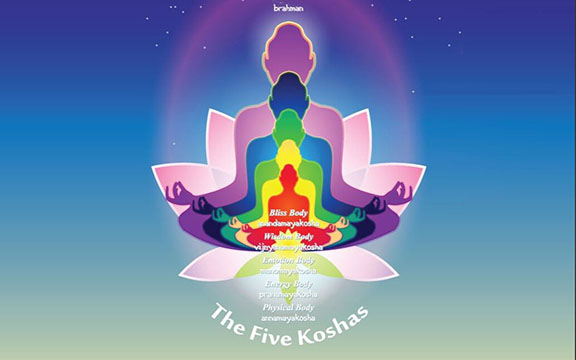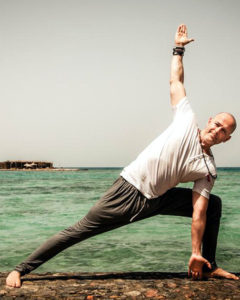 One question I often like to start my meditation workshops with is: Are you your thoughts? It’s quite controversial for some people and can provoke interesting responses. Sure, most of the time we feel like we are stuck in our heads. But aside from our minds, how else do we define ourselves? Maybe we don’t pay enough attention to the other parts of us. We have a body and we have emotions too. Is that it or are there other, more subtle embodiments too of who you are?
One question I often like to start my meditation workshops with is: Are you your thoughts? It’s quite controversial for some people and can provoke interesting responses. Sure, most of the time we feel like we are stuck in our heads. But aside from our minds, how else do we define ourselves? Maybe we don’t pay enough attention to the other parts of us. We have a body and we have emotions too. Is that it or are there other, more subtle embodiments too of who you are?
You may be surprised to know that defining the real and full aspects of each of us was a question that preoccupied the ancient yogis. And this wasn’t a doctrine about transcending the mind and body, but more about stepping fully into your own power. The five bodies — or koshas, as they were known — seem as relevant now as they were thousands of years ago.
The five koshas, or bodies, consist of the physical, energy, mental, wisdom and bliss bodies. Just like our hands are composed of five fingers, each of the five bodies are connected and cannot be separated — changes to one have an effect on the others. You might liken them also to the five senses or five elements — made up originally of earth, air, fire, water and ether. To truly live your best life (as a modern day coach might put it), you need to function properly on all five! Luckily, tuning in to all five koshas is attainable with a bit of practice and awareness — and yoga gives us the tools to achieve this.
Annamaya Kosha
We should probably start with the physical body, Annamaya Kosha. Our bodies, of course, define all of us in very real ways. This is the first of the five selves. Some people barely inhabit their own skin. As James Joyce wrote: “Mr Duffy lived a short distance from his body” — and we all know someone like that! At the same time, some people perhaps over inhabit their physicality with obsessions such as physical training, diet or facial and bodily reconstruction. Some of the contestants in Love Island might fall into this category! Others carry their emotions or identity with their bodies — depressed, aggressive, confident – we can recognize all of these.
To truly get into this first kosha we need to learn again to listen to the whispered messages from our physical bodies — which we have forgotten to do. Asana is a perfect way to find this awareness. Once you start tuning into the body with yoga postures you will quickly learn to feel grounded, more present, and to listen again to the body. You may recognize your own strengths and weaknesses and how other factors really affect the physical body, such as good nutrition and quality sleep.
Pranamaya Kosha
The first of the three more subtle bodies is the energy body or Pranamaya Kosha. Yogis talk of prana or energy, which is similar to Chi in Chinese medicine or Ki in Japanese martial arts. This energy is often translated as “vital force” but in fact is seen as more than this, like the original creative force which is said to exist in animate and inanimate objects.
While the energy body can have a powerful effect on the physical and mental bodies, it is helpful to first understand how our energy is intrinsically linked to our breath. On a simple level, slowing down the rate of breathing , using the abdomen and inhaling and exhaling through the nose can have very positive affects on all the major systems of the body. This is validated by simple bio-feedback devices, like decreases in heart rate or blood pressure; the mind becomes calmer too with better, more regulated breathing. Dedicated breathing practices in Yoga form one of the eight limbs and are known as pranayama. You can increase your levels of prana simply by using the breath.
Manomaya Kosha
Next we have the thought body or mental body, the Manomaya Kosha. Einstein famously said that if you have one of two great thoughts in your lifetime you’ve done well! What he was probably really trying to say was that so many of the thoughts inside our heads are just noise, or chatter — often unhelpful or critical. The ancient yogis knew this, of course, and in the Yoga Sutra (1.2), Patanjali advises us that Yoga is the cessation of the fluctuations and modifications of the mind (Yogas citta vritti nirodha). Overactive minds can affect emotions and the nervous system, and often not in a good way.
At the same time we need the thought body to perceive the world, to function and to make sense of all that is around us. The scriptures tell us that there are different layers to the mental body — passing and cursory thoughts or emotions, and then more powerful deeper thought patterns that you may have acquired through your upbringing or culture, such as beliefs and opinions or just accumulated mental patterns that become habitual. Known as samskaras in Sanskrit, these deeper thought grooves can dominate our thinking often in a negative way, so paying attention to the stories inside our heads is an effective way of tuning in properly to the thought body.
Vijnanamaya Kosha
After that comes the wisdom body, the Vijnanamaya Kosha. The last of the three subtle bodies, this body may take a bit more time to cultivate. While the physical practices of Yoga help us to step into the first three bodies, the wisdom body may require a bit more work and can be more easily accessed through meditation. The Vijnanamaya Kosha is quite different from the thought body and can be understood as an inner knowing, intuition or insight. It exists beneath the constant stream of thoughts we experience (reckoned to be about 60,000 per day) as a higher intelligence. When we try to access the higher self, or the wisdom body, we want the thinking mind to quieten so we are almost witnessing what is going on and not getting attached to prevalent thought patterns.
A lot of creatives, whether artists, writers or musicians, talk about using the wisdom body or tapping into an inner knowing when they need to get the creative juices flowing. Words, images or melodies may feel better than others and this can be a direct highway to the wisdom body. When you next practice Yoga you might try with a specific pose to really sense what you are feeling beneath the pose; this can be a way to access the wisdom body.
Anandamaya Kosha
Finally there is the bliss body, or Anandamaya Kosha. Admittedly, today, happiness seems to be on sale and commoditized by every life coach or personal development guru (“Sign on to my online course today to tap into your unlimited true happiness!”). But the bliss body is accessible to us all and in more moments than we might think. Although some say it is the most hidden part of us, the great sages rightly believed that life was joyful and it was a gift to be alive. Accepting that love is the deepest reality separate from our own expectations lies at the heart of it.
When you are truly in the flow and doing something you love you may have experienced the bliss body. Or perhaps totally engrossed in a magical sunset, a beautiful piece of music or an uplifting moment in a film, you dip in for a fleeting few seconds to just experience the goodness of life. Contact with the bliss body can be developed through mantra, meditation and prayer, through ecstatic dance, asana or deep relaxation practices like Yoga Nidra, or even through walks in nature.
About the Author:
 Stephen Marks is a Yoga teacher based in London. He notes: “In the yogic tradition there is emphasis on dharma (life purpose) as well as karma. It’s funny but my Grandfather was one of the first true Londoners to get into Yoga in the 1950’s and 1960’s and my mother too practiced as a young woman. I like to think in some way I’m continuing what they started.” Find out more at: stephenmarksyoga.com (Reprinted from Om Yoga & Lifestyle magazine)
Stephen Marks is a Yoga teacher based in London. He notes: “In the yogic tradition there is emphasis on dharma (life purpose) as well as karma. It’s funny but my Grandfather was one of the first true Londoners to get into Yoga in the 1950’s and 1960’s and my mother too practiced as a young woman. I like to think in some way I’m continuing what they started.” Find out more at: stephenmarksyoga.com (Reprinted from Om Yoga & Lifestyle magazine)

